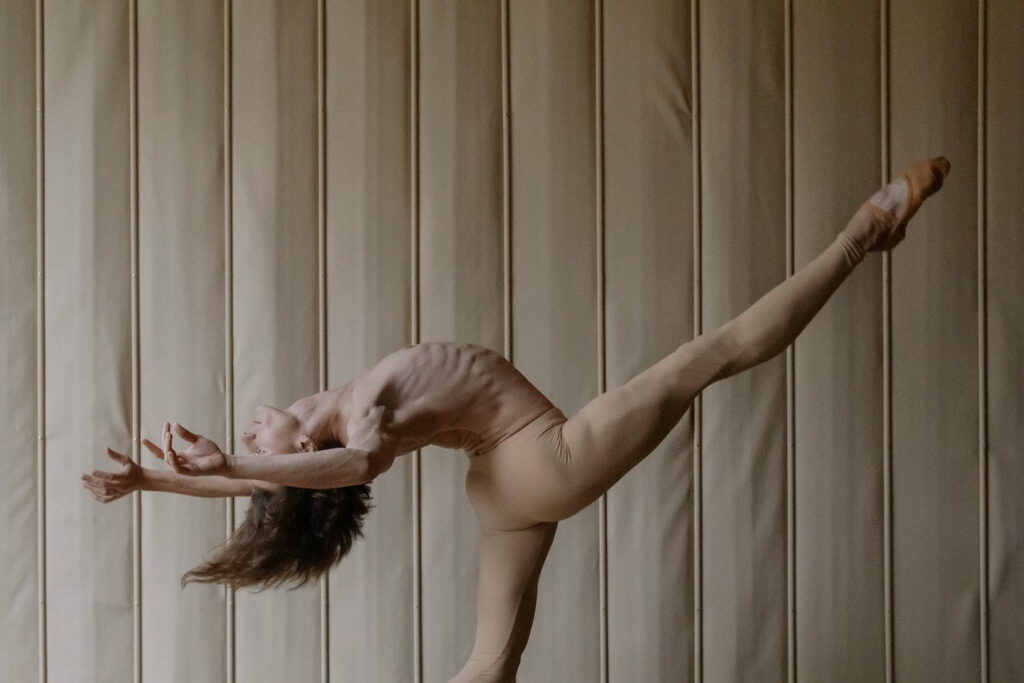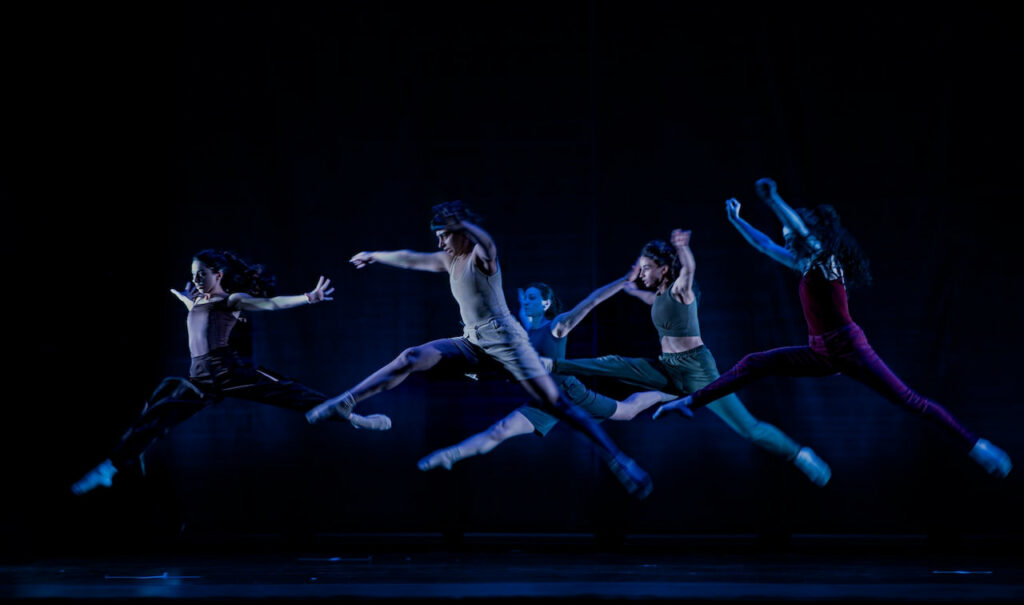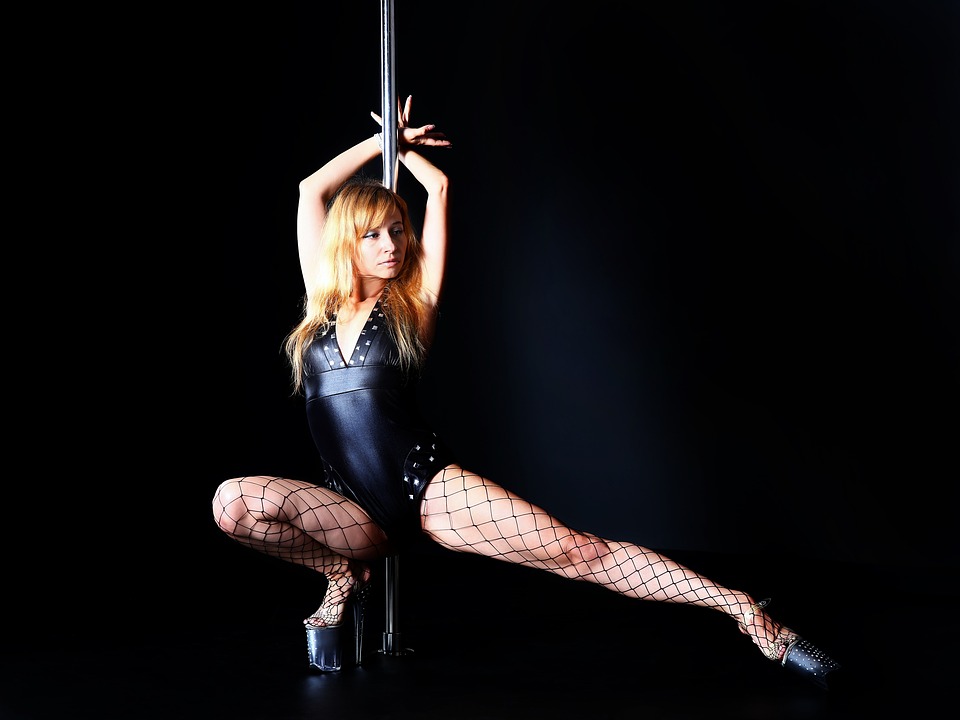
Summary
Welcome » Welcome » Guide to dance types » Contemporary dance: exploration of movement and emotion
Contemporary dance: exploration of movement and emotion
Have you always wanted to free your dancing soul by breaking the rules? You are in the right place since today we are talking about contemporary dance. This dance is both recognized throughout the world and little known to the general public. Let's retrace his history, his specificities and let's demystify step by step the myth of a dance that appears inaccessible.
Summary
Definition of contemporary dance
We know that dance has existed since the dawn of time and has only evolved over the centuries. For a long time the traditional styles as the classic dance where the ballet were emblematic figures dance. But at the beginning of 20th there contemporary dance has developed. It is characterized by a free artistic expression with a less supervised technique than in classical forms to give dancers the chance to create more dense and fluid movements. Modern dance is inspired by philosophical current And psychological addressing specific themes such as emotional expression, relationships with humans or identity. Thus, dancers can create atmospheres And unique choreographies often accompanied by experimental music. Dance is a vast universe, which is why contemporary dance is in constantly evolving bringing out new movements and techniques regularly. Contemporary dance is so evolving that it is present in the Tahitian urban dances.
How was she born?
During the 1920s, a new movement, modern dance made its appearance. Often confused with modern jazz. This new movement showed an opposition of certain artists to the classical style, showing a desire to escape from this straitjacket by having greater freedom of expression putting at the service of a creativity of movements. A revolution has begun to take shape within the artistic field. It is from 1960, after the war, that Merce Cunningham, American choreographer, decided to integrate unchoreographed movements to modern dance. There gesture used draws its inspiration in the gravity and plays on the body weight while remaining fluid And light. This is how contemporary dance was born.
Specificities of contemporary dance
You will have understood, contemporary dance is unique of its kind. If it is so much, it is because it contains specific characteristics. The largest would be the absence of choreographic rules. Thanks to this, dancers have a wide range of movements, which allows them to perform floor dance passing through the aerial dance using their bust and others acrobatic movements.
Furthermore, there is no prohibition, which is why some dancers have introduced theatrical elements, of performance, artistic Or technological in their shows.
Finally, the costumes in contemporary dance are extremely minimalists, as simple as possible to focus on the gestures carried out and intentionality of performance.

The different contemporary dances
Contemporary dance is not restricted to a single genre, there are many variants thanks to that freedom and to his expression. Here are some emblematic examples.
African contemporary dance
Contemporary African dance appeared in the years 1960 And 1970 first in West Africa then it ended up being popularized all over the world. This style is a mixture of modern dance techniques, of western dance and of traditional African movements.
She is known for tackling different themes as the policy, there spirituality, the story and the culture. To juxtapose these ideas with dance, the dancers do not hesitate to use their body as means of emotional expression and while incorporating into their choreography gestures of daily life and references to African culture.
The pioneer in the field is Germaine Acogny, Senegalese dancer. In 1985, she throws her own company in Toulouse, the Studio-Ecole-Ballet-Théâtre du 3e Monde. Then in 1995, she returns to Senegal to found the International Center for Traditional and Contemporary African Dances For bring together African and international dancers in order to move towards contemporary African dance.
This dance form is a way for African artists to share a cultural heritage across the world and celebrate with pride identity African. But also to promote appreciation and the understanding of this culture.
Today, many contemporary African dance companies have emerged. Notably the Salia ni Seydou Company in Burkina Faso, Jant-Bi and Didier Awadi, both in Senegal.
Contemporary dance with everyday objects
Let's talk about contemporary dance with a ball. It appeared in the 1960s. Many people associate it with modern dance, yet it deviates from it due to the presence of a physical element which allows you to create figures And movements exclusive.
It's a unique form of artistic expression aiming to find a balance, a fluidity and one movement while manipulating an object. This dance is a new door for dancers wanting combine there grace and the precision gestures when handling the ball.
There ball being there'key element in this style, the dancers must absolutely be skillful to handle it serenely And precisely of manner well-off And expressive. Why is the ball used? It is present to add depth and some texture to the representation. What creates pleasant visual effects for the spectators. This is why the dancer must have a excellent physical condition. It is important that he has a physical force to keep the ball in the air while performing complex movements.
The dancers also use the ball to give'illusion of an extension of the body thus giving a harmony between the movement of ball and that of dancer. This unit can give rise to movements unpredictable And delicate, that’s what makes it authenticity.
It is used for convey emotions such as joy, sadness, frustration or for tell a story. This gives rise to a immersive experience which is both emotionally And visually powerful.
Japanese contemporary dance
Japanese contemporary dance or butoh emerged at the beginning of the years 1960, at the same time as a protest movement in Japan. It is Hijikata Tatsumi who created this new style of dance to obtain the freedom of the body. It is a controversial form since it is inspired by the human condition discussing deep topics like dead, L'isolation or the suffering.
Also called shadow dance, it draws its inspiration of the traditional Japanese dance and other art forms like literature, THE surrealism and the body art movement. Butoh dancers perform choreographies based on slow movements And crystal clear in order to represent the agony and the pain and the movements fast And jerky to describe anxiety And panic.
In buto, the most striking elements are the use of suit and of makeup white. The latter aims toillustrate A ghost and the costumes torn suggest the despair and the misery. They reinforce themes like distress Or the agony, which makes the result all the more intense.
However, contemporary Japanese dance can also explore lighter topics as the beauty and the grace. It is a style that invites the viewer to question the darkest but also the most cheerful subjects of life. Dancers in this category are perceived as those with the greatest ability has communicate on the intense emotions through dance.

To remember
What should we remember about contemporary dance? We explain to you what is most important.
Contemporary dance arrived in the 1960s in opposition to traditional dances like ballet. It establishes itself as a style of unchoreographed dance while keeping movements light And fluids. This form offers dancers the possibility of being creative while having a great freedom of expression. It is a style in constant evolution which allows develop news shapes of expression and new movements.
Contemporary African dance is a dance deeply rooted in African culture and traditions. It allows artists to share their cultural heritage worldwide.
Another category of dance exists, that of dancing with a ball. She asks for a impeccable skill. The balloon is used to give depth, of the extension to the body for unique visual effects.
Finally, contemporary butoh dance explores deep themes such as death and suffering but also simpler subjects such as beauty. THE movements are expressive, sometimes violent, sometimes slow to represent violence or joy. Of the costumes skinned and makeup white are set to return strong images. The aim being to make reaffect the living conditions of humans.
In conclusion, contemporary dance offers many advantages since this is only a non-exhaustive list of the different variations of contemporary dance. It also goes well with today's dances such as hip hop or jazz dance. You can even start as a duo, if you don't know how to go about it, take a look at our article dance for two.
Dance freely at DECIBEL ®
You are not yet convinced by contemporary dance? It doesn't matter, you can still learn the basics of dance at DECIBEL ®.
Come and mix it workout and the dance during sessions of 45 minutes. You want to work on your cardio ? This is good at DECIBEL ® you work it on rhythmic choreographies.
You can even rstrengthen your abs and glutes in subdued light so that you never again feel self-conscious about your movements. Count on our coaches to give you confidence.
Want to join the DECIBEL adventure ® ?
Read also
follow us
on instagram
Follow our news,
take advantage of our tutorials and participate to our
contests!
BREAKING NEWS!
Receive our newsletter.






